
Where to Now? Short Stories from Zimbabwe was launched by ‘amaBooks at the National Gallery on 24th September 2011 in conjunction with the Intwasa Arts Festival koBulawayo. It will also be published by Parthian Books in UK in 2012. Editor Jane Morris and ‘amaBooks of Bulawayo began publishing anthologies of Zimbabwe-themed short writings in the early 2000s. The current volume follows the success of Long Time Coming: Short Writings from Zimbabwe (2008), where thirty-three writers chronicle ‘the lost decade’ of political crisis, forced removals, mass migration, joblessness, starvation, hyperinflation, AIDS, cholera and other hardships. Where to Now? Short Stories from Zimbabwe is a slimmer volume with half as many pieces. The photograph of a stone sculpture by Arlington Muzondo graces the book cover; and its roaming cracks suggest a myriad of tentative and uncertain routes – as if in answer to the question posed. In this transition period – where national crisis continues in slow motion – Zimbabwe’s writers clearly grapple for a new sense of direction. Jane Morris said submissions slowed considerably from 2009. Even so, there are some excellent pieces. Fifteen of the sixteen short stories catch the socio-political impasse and tell of its far-reaching effects. The exception is Bryony Rheam’s The Piano Tuner, a Zambian story with a distinctly different mood. Though Rheam is a displaced Zimbabwean herself, the setting for her story is a hot and dry Ndola, where Thomas Jenkins Piano Tuners is now fronted by Mr Leonard Mwale who delights his client, a shy woman of Indian heritage, with a light piece of Beethoven. The characters literally connect on a positive note. But this stands in contrast to the other stories overshadowed by Zimbabwe’s fraught politics, which they cannot seem to transcend. Mzana Mthimkhulu’s I am an African, am I? is exemplary. Accused by an anti-Western colleague of betraying African identity, a troubled company manager finds affirmation and gratitude for delivering mealie-meal to his needy rural relatives, but this will not ultimately resolve the deeper existential dilemma. Five stories address political violence and dispossession, and are noticeably downbeat. Raisedon Baya’s Her Skin is a Map details police brutality during a teachers’ protest in Bulawayo. In The Accidental Hero, Murenga Joseph Chikowero tells the fate of young ‘Comrade Advance’ who distributes free eggs to the Party faithful during food shortages and gets a groundswell of support. But as crowds surge he falls to his death from a ladder; and absurdly becomes a martyr of the anti-colonial struggle – a ‘HERO OF THE PIOPLE’ [sic]. Christopher Mlalazi’s They are Coming is a snapshot of troubled township life before an election, when the Green Bombers (Zimbabwe’s Youth Brigade) rampage though a community, splitting a family and leaving a path of destruction. In Nyevero Muza’s The Poetry Slammer, a ‘closet writer’ creates an alter-ego poet named X, who leads a crowd of protesters against tyranny, but takes a bullet in his chest. X becomes a martyr, identified by his blood-stained poem of resistance. But the closet writer’s own creative/populist aspirations fall flat. Tomato Stakes, by John Eppel, exposes Zimbabwe’s land grab and its human cost. War veterans, youths, and the Deputy Director of Youth Brigades drive a desperate white farmer to hang himself. Also his Malawian foreman is murdered and left with the word BLANTYRE carved into his chest to mark him, like his white boss, as one who does not belong on Zimbabwean land. The white farmer’s surviving family find refuge in New Zealand, which ends their 350-year history on the African continent. Political violence, dispossession, and forced relocation still weigh heavily on the national consciousness, as the above five stories show. On the theme of exile there are four thought-provoking pieces. In Crossroads, Novuyo Rosa Tshuma tells about starting a new life in South Africa – the hard choices and shattered dreams. She excellently catches the nervous anticipation, lonely struggle, self-sacrifice, unwanted dependence on relatives and bloody-minded determination that has characterised so many journeys across the Limpopo. If disillusionment is the dawning reality in Crossroads, fear of xenophobic violence is the theme in Sandisile Tshuma’s The Need. Visualizing an illegal immigrant set ablaze in a Johannesburg slum not long after the Football World Cup, the narrator fears ‘the collective brain that told you that foreign is bad, that foreign steals jobs, that your brother is your enemy and that ‘they’ all deserve to die.’ The Need explores the psychology of xenophobia, how friends can suddenly become murderous enemies, how it feels to be cast as an outsider in the so-called ‘Rainbow Nation’. In Sudden Death by Blessing Musariri, we meet two enterprising Zimbabweans working as carers for the elderly in the UK. Agnes is not really Agnes at all: that is her fake ID. Simba, her partner, also poses as someone else to get through UK Immigration. After months of hard work, they believe they have finally sent enough money to Zimbabwe to build a house – but betrayal by a thieving relative wrecks their dream. Trans-continental tragedy also figures in Diana Charsley’s Mr Pothole, which focusses on a hit and run victim with dementia, found face-down in a pothole. His Bulawayo funeral is attended by his next of kin, who abandoned him for a life in London. The exile-themed stories express sadness and expose the huge social and psychological cost of Zimbabwe’s mass exodus. Moving to gender, several stories challenge female subordination. Mapfumo Clement Chihota tells of emasculation versus female empowerment in A Beast and a Jete. A jete is ‘A woman who kicks her husband’s bum around … who defeats her husband mentally and outwits him at every turn.’ In this case Vanyemba cuckolds her husband with one of the villagers but is acquitted of adultery through lack of evidence, by the village headman, to the great amusement of all. She is also paid damages for what is judged a false accusation. Barbara Mhangami-Ruwende continues the theme of female assertiveness in Christina the Colourful. Here Kudu, the young narrator, greatly admires her transgressive aunt, criticised for ‘jumping from town to town’ and disgracing her extended family. Cornered into an arranged marriage, Christina nevertheless outwits her forceful patriarchal matchmakers, becoming a strong role model for her young niece in a bitter-sweet resolution, which necessitates their separation. A child narrator also tells Thabisani Ndlovu’s story Making a Woman, which exposes appalling patriarchal violence, conducted casually within a small rural community. The young boy’s Aunt Mongi is beautiful but deaf, unmarried and childless. Grandpa, aggrieved for having a disabled daughter, decides to ‘make her a woman’ which means organising her rape and impregnation by a chosen suitor. But Aunt Mongi defiantly chooses abortion. Abortion also figures in NoViolet Bulawayo’s Snapshots. (She won the 2011 Caine Prize for Hitting Budapest). Previously published in 2009 in New Writing from Africa, this is the sad story of a young girl who does not stand a chance against cruel patriarchal customs that drive her onto the street after the death of her father, away from a mother who is compelled to disown her, into the arms of a sexual predator when she has nowhere else to turn, and finally to a back-street abortionist, who seals her fate with a jabbing coat-hanger. Though the piece is exceptionally well-written, it is depressing to think a young girl’s fate can be so thoroughly determined by circumstances over which she has no control. By contrast the other female characters in this collection, Vanyemba, Christina, and even Aunt Mongi, are not stifled or snuffed out by patriarchal forces. Alone, by Fungai Rufaro Machirori, also examines strength and resilience in the reflections of a single woman moving into middle-age without needing a man in her life. While all of the content in this collection is engaging, my one criticism is that the quality is uneven. The short story is possibly the most difficult prose form to master; and it is apparent that some writers are more attendant to issues of structure and style than others. Some pieces are more sketches than short stories. On the other hand, the inclusion of writing that is somewhat rough around the edges, in juxtaposition to that of a more polished quality, lends the collection an authentic appeal. This is a rewarding read for anyone following the Zimbabwe story, for anyone concerned about Zimbabweans and their collective destiny.
Reviewed by Drew Shaw
Reviewed by Drew Shaw


















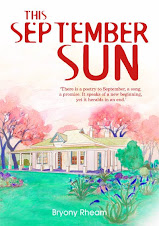.jpg)



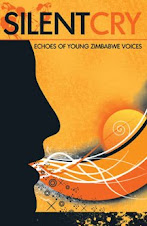
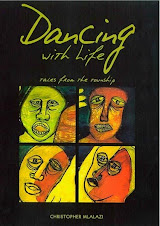

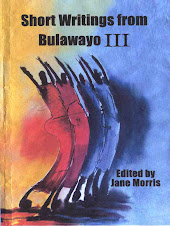


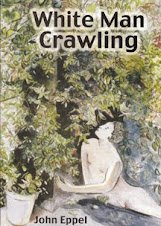










.jpg)





















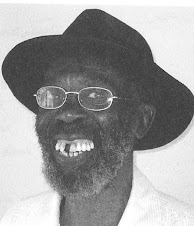






No comments:
Post a Comment